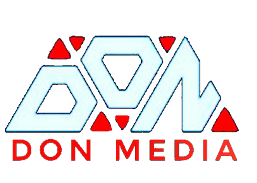THE PROCESS OF WRITTING A CALL SHEET
A call sheet is a document used in the film and television industry to provide important information to the cast and crew about a specific day's shoot. It serves as a guide for everyone involved in the production, ensuring that everyone is aware of the schedule, location, and other essential details. Writing a call sheet involves several steps, which I will explain in detail below.
1. Header: Start by creating a header that includes the
production title, shoot date, and the page number. This information helps to
identify the call sheet and keep it organized.
2. Production Information: Provide details about the
production, such as the production company's name, producer's name, and
director's name. This section helps to establish the context of the shoot.
3. Contact Information: Include contact details for key
personnel, such as the production office, production coordinator, and assistant
director. This ensures that everyone can easily reach the necessary individuals
if they have any questions or concerns.
4. Shooting Schedule: Outline the shooting schedule for the
day, including the call time (the time when everyone needs to be on set), the
estimated wrap time (the time when shooting is expected to end), and any breaks
or meal times. This section helps the cast and crew plan their day accordingly.
5. Location Details: Provide information about the shoot
location, including the address, directions, and any specific instructions or
considerations. This helps everyone find the location and prepare for any unique
requirements or challenges.
6. Cast and Crew List: List all the cast and crew members
who are expected to be on set that day. Include their names, roles, and contact
information. This section helps everyone know who will be present and who to
contact if needed.
7. Scene Details: Provide a breakdown of the scenes that
will be shot that day. Include the scene number, a brief description, and any
specific requirements or considerations. This section helps the cast and crew
understand the sequence of shots and any special instructions for each scene.
8. Props, Wardrobe, and Makeup: Specify any props, wardrobe
items, or makeup requirements for the day's shoot. This information helps the
relevant departments prepare and bring the necessary items to set.
9. Special Instructions: Include any additional instructions
or notes that are relevant to the day's shoot. This could include safety
precautions, technical requirements, or any other important details that need
to be communicated.
10. Weather and Safety: Provide information about the
weather conditions and any safety considerations for the day. This section
helps everyone prepare for any potential challenges or hazards.
11. Attachments: If there are any additional documents or
resources that are relevant to the shoot, such as storyboards or location maps,
attach them to the call sheet for easy reference.
12. Distribution: Once the call sheet is complete,
distribute it to the cast and crew members. This can be done electronically or
in printed form, depending on the production's preferences.
Writing a call sheet requires attention to detail and clear
communication. It is essential to ensure that all the necessary information is
included and that it is presented in a clear and organized manner. By following
these steps, you can create an effective call sheet that will help facilitate a
smooth and successful shoot.







.jpg)



.jpg)












.jpg)





Comments